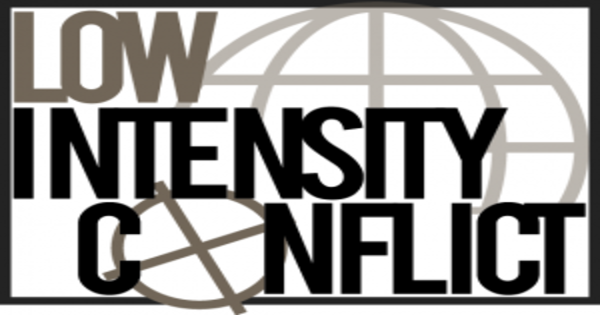A low-intensity conflict (LIC) is a military conflict between two or more state or non-state entities that is less intense than a conventional war. It is a phrase used in military and security studies to define a sort of conflict that is less intense and organized than normal, everyday violence yet falls below the threshold of conventional warfare.
LIC sometimes involves irregular forces like as insurgencies, guerrilla organizations, or militias, and it usually occurs in a lengthy and unclear setting. It entails the employment of military forces by the state to enforce compliance with its goals or aims in a selected and restrained manner. The phrase can be applied to conflicts in which at least one or both opposing sides act along such lines.
Here are some key characteristics of low-intensity conflict:
- Asymmetric Warfare: LIC often involves asymmetric warfare, where one side (usually the insurgents or non-state actors) lacks the military and logistical capabilities of the other (usually the government or a more powerful state).
- Non-State Actors: LIC is frequently associated with non-state actors, including rebel groups, terrorist organizations, and criminal organizations. These groups may operate in a clandestine or semi-clandestine manner.
- Protracted Nature: Low-intensity conflicts tend to be long-lasting and protracted, sometimes lasting for years or even decades. The conflict may go through periods of escalation and de-escalation.
- Ambiguity and Blurred Lines: The boundaries between combatants and civilians can become blurred in LIC, making it challenging to distinguish between friend and foe. This can lead to ethical and legal challenges, as well as difficulties in targeting and avoiding civilian casualties.
- Limited Use of Conventional Military Force: LIC, as opposed to high-intensity conflicts such as conventional warfare between nation-states, often entails the employment of limited or irregular conventional military power. Guerrilla warfare, sabotage, terrorism, and insurgency are all examples of tactics.
- Political and Social Dimensions: LIC frequently has profound political and social roots, with grievances, ethnic or ideological motivations, and historical issues all contributing to the conflict. It may also include efforts to change people’s ideas, acquire popular support, or destroy the legitimacy of the opposing party.
- Counterinsurgency and Counterterrorism: Counterinsurgency and counterterrorism techniques, which can include a combination of military, political, economic, and social approaches to address the underlying causes of the conflict, are frequently used by governments and security forces involved in LIC.
Counterinsurgency activities in Afghanistan, the struggle against numerous insurgent organizations in Southeast Asia, and wars in several African countries are examples of low-intensity conflicts. The nature of LICs makes them complex and difficult to resolve, as they frequently necessitate a diversified and long-term solution that goes beyond merely military means.
















